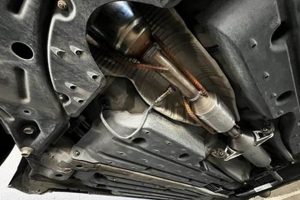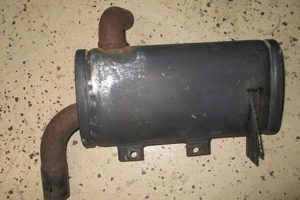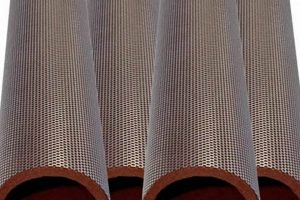Words that denote a reduced, indistinct, or suppressed sound are the subject of this exploration. Such terms describe audio that is weakened, obscured, or lacking clarity, often due to obstruction or interference. An instance of this would be describing a conversation heard through a thick wall, or the output of a microphone covered by fabric.
The ability to precisely articulate variations in sound reduction is crucial in numerous fields. Law enforcement, audio engineering, and even literary writing benefit from a nuanced understanding of how to describe diminished audibility. A richer vocabulary allows for more accurate representation of environments and events, leading to improved comprehension and analysis. Historically, this vocabulary has evolved alongside advancements in sound recording and analysis technology, reflecting an increasing need for precision in acoustic description.
The following sections will delve deeper into specific words and phrases that capture the essence of diminished or obscured sound, providing a comprehensive resource for enhancing descriptive accuracy.
Enhancing Descriptive Accuracy
Employing appropriate terminology to describe reduced or obscured sound requires careful consideration of context and nuance. The following tips aim to improve the precision and effectiveness of such descriptions.
Tip 1: Distinguish Between Volume and Clarity. A sound can be low in volume without being unclear. Conversely, a sound can be loud but still obscured by interference. Consider whether the primary issue is loudness or intelligibility when selecting the appropriate descriptor. For example, a distant shout might be faint (low volume), while speech through a closed door might be indistinct (low clarity).
Tip 2: Consider the Source of the Obstruction. The nature of the barrier affecting the sound influences the best descriptive word. Is the sound passing through a solid object, traveling across a distance, or being deliberately suppressed? “Subdued” might describe a voice kept low to avoid detection, whereas “smothered” might describe a scream blocked by a pillow.
Tip 3: Pay Attention to Frequency Reduction. Obstructions often affect higher frequencies more significantly than lower frequencies. This can result in sound that is boomy or bass-heavy. Use terms that reflect this specific characteristic when appropriate. For instance, describe music from a passing car as having a “thumping” or “muddied” quality.
Tip 4: Utilize Onomatopoeia Sparingly. While imitative sounds can be effective, overuse can detract from a professional tone. Supplement onomatopoeia with precise descriptive language. Instead of simply saying the sound was “thump,” specify that it was a “dull thump, indicative of impact against a yielding surface.”
Tip 5: Understand the Context of Recording Equipment. The equipment being used to record audio affects the possible descriptions. “Clipping” or “distortion” may be accurate terms if related to equipment malfunction. This may be appropriate if investigating the clarity of a recording.
Tip 6: Apply quantitative descriptors where appropriate. If possible, include decibel change information where it exists. This could occur if there is audio data to analyze.
Mastering the art of describing reduced or obscured sound enhances communication across various disciplines. The careful application of these tips will contribute to greater accuracy and clarity in describing acoustic phenomena.
The final section will summarize the main points, concluding the exploration of nuanced vocabulary in this area.
1. Obstructed Sound
The presence of “obstructed sound” frequently necessitates the use of terms equivalent to “muffled synonyms.” This is a direct consequence of physical barriers impeding the propagation of sound waves. When a sound source is partially or fully blocked, the listener perceives a reduction in both volume and clarity. This effect fundamentally alters the acoustic characteristics of the sound, leading to the use of descriptors that capture this altered quality. A clear example is speech emanating from behind a closed door: the door acts as an obstruction, attenuating higher frequencies and reducing overall sound pressure, resulting in a sound that is described as muffled, dull, or subdued. The understanding of this cause-and-effect relationship is essential for accurately interpreting audio information, especially in forensic analysis or architectural acoustics.
The significance of “obstructed sound” as a component of “muffled synonyms” lies in its pervasive influence on auditory perception. In construction environments, for instance, noise from heavy machinery may be partially blocked by scaffolding and barriers. The resultant sound, described with words suggesting reduced intensity and clarity, informs assessments of noise pollution levels and the efficacy of noise reduction measures. Likewise, in medical diagnostics, a doctor may need to discern heart or lung sounds through the intervening tissues of the body. The qualities of the obstructed sound provide diagnostic clues; using terms like “distant” or “faint” to describe the muffled sounds provides critical data.
In summary, the relationship between “obstructed sound” and the specific terminology used to describe it is one of direct dependence. The presence of an obstruction is the primary driver for the perception of the sound as “muffled.” This connection is vital for accurate communication and interpretation in diverse fields. Recognizing the causal link between obstruction and sonic alteration allows professionals to choose the most appropriate and informative descriptors, ultimately leading to more effective analysis and decision-making.
2. Reduced Clarity
The degradation of sound intelligibility, or “Reduced Clarity,” forms a core element within the broader category of “muffled synonyms.” When audio loses its distinctness, whether due to interference, distortion, or other factors, the perception shifts from clear articulation to a blurred or indistinct presentation. This impacts communication effectiveness and information retrieval from auditory sources.
- Frequency Attenuation
Specific frequencies within the sound spectrum may be disproportionately weakened, resulting in a tonal imbalance and reduced overall clarity. High-frequency components, crucial for speech intelligibility and the perception of detail, are often more susceptible to absorption and scattering by obstacles. An example includes the loss of sibilant sounds in speech transmitted through a wall, rendering words harder to distinguish. This phenomenon necessitates the use of words that convey the idea of incomplete or uneven sound transmission.
- Signal Degradation
Distortion, noise, and interference can compromise the integrity of the sound signal. Electronic equipment malfunction, poor recording conditions, or ambient noise can introduce unwanted elements that mask the intended sound. Consider a recording made in a noisy environment; the target audio might be present, but its clarity is compromised by the presence of background sounds, requiring descriptors like “noisy,” “obscured,” or “indistinct.”
- Reverberation and Echo
Excessive reverberation or echoes can blur the temporal structure of sound, causing individual sounds to merge and overlap. This effect reduces the ability to clearly separate distinct acoustic events. An instance would be speech within a large, empty room, where multiple reflections of the sound waves create a confusing acoustic environment. The correct descriptive terms highlight the loss of temporal separation, for example, “echoing,” “blurred,” or “muddy.”
- Compression Artifacts
Digital audio compression techniques, while useful for reducing file sizes, can introduce artifacts that degrade sound quality. Lossy compression algorithms remove or alter certain components of the audio signal to achieve compression, leading to distortions and a reduction in clarity. The resulting sound, often described as “grainy,” “warped,” or “compressed,” lacks the fidelity of the original source, reflecting a loss of information in the compression process.
These varied facets illustrate how “Reduced Clarity” contributes significantly to the array of “muffled synonyms.” The presence of any one or combination of these factors shapes how we perceive and describe sound, affecting communication, analysis, and artistic expression. Recognizing these components empowers the user to describe specific acoustic properties accurately.
3. Suppressed Volume
Reduced sound intensity, designated as “Suppressed Volume,” stands as a critical facet within the descriptive landscape of “muffled synonyms.” This attribute focuses on diminished audibility, often resulting from intentional or unintentional dampening of a sound’s energy. The following will examine multiple causes and characteristics.
- Intentional Dampening
Conscious efforts to reduce sound levels often result in lower volumes. Such actions aim to minimize disturbance or maintain privacy. Examples include whispering, the use of soundproofing materials, or muting electronic devices. The resulting audio necessitates descriptors indicative of intentionally lessened volume, like “hushed,” “subdued,” or “muted.” In covert operations, the use of such methods is paramount. In recording studios, this allows for purer sound recordings.
- Environmental Absorption
The properties of a surrounding environment can significantly affect sound propagation. Soft materials, such as carpets, curtains, and upholstery, absorb sound energy, reducing overall volume. In contrast, hard surfaces reflect sound, potentially increasing loudness and reverberation. The presence of absorbent materials leads to a perceived volume reduction, warranting terms such as “deadened,” “dampened,” or “swallowed,” to characterize the auditory experience. Empty rooms often reflect the sounds greatly, while full rooms are quieter.
- Distance Attenuation
As sound travels away from its source, its intensity decreases due to the spreading of energy over a larger area. This phenomenon, known as distance attenuation, results in a progressively lower volume at greater distances. Describing a distant sound requires the use of terms that convey reduced loudness, such as “faint,” “distant,” or “remote.” Emergency sirens are significantly louder closer to the source. This distance attenuation is a primary factor.
- Mechanical Interference
Physical barriers, such as walls, doors, or partitions, can impede sound transmission. These barriers absorb, reflect, or deflect sound waves, resulting in a reduction in volume on the opposite side. The effectiveness of the barrier depends on its material properties and thickness. Describing sound passing through a barrier requires the use of terms that reflect this reduction in intensity, like “muffled,” “smothered,” or “subdued.” The thicker the wall, the greater the interference.
The concept of “Suppressed Volume” contributes significantly to the understanding and use of “muffled synonyms.” Identifying the root cause of volume reduction, whether intentional, environmental, or structural, allows for a more precise selection of descriptors, ultimately improving the accuracy of communication about sound experiences. These elements work together to influence perception.
4. Indistinct Audio
Impaired sound clarity, designated as “Indistinct Audio,” exhibits a symbiotic relationship with terms classified as “muffled synonyms.” The presence of compromised sound articulation inevitably leads to descriptions that emphasize reduced definition and intelligibility. Several factors contribute to this phenomenon. Signal degradation, environmental noise, frequency attenuation, and reverberation create conditions where the original sonic information is obscured or distorted. The consequence is a diminished ability to discern individual sound elements, requiring descriptors that convey the lack of clarity. An example involves a telephone conversation with poor signal strength; the resulting speech, characterized by static and dropouts, is deemed “indistinct” or “garbled.” In forensic audio analysis, distinguishing speech is paramount and compromised by clarity.
The significance of “Indistinct Audio” as a component of “muffled synonyms” stems from its direct impact on information retrieval and comprehension. Consider a recording of a conversation captured in a crowded environment; the overlapping sounds of multiple speakers and ambient noise create a mix where individual voices become difficult to isolate and understand. This lack of clarity necessitates terms that reflect the degraded intelligibility, such as “unclear,” “blurred,” or “jumbled.” Likewise, in medical diagnostics, heart sounds obscured by lung noise are considered “indistinct,” necessitating advanced signal processing techniques to extract the relevant information. A doctor might use equipment to discern sounds in these situations. The inability to isolate a sound event is critical.
In summary, the connection between “Indistinct Audio” and “muffled synonyms” is one of inherent dependence. The compromised clarity of sound automatically triggers the need for descriptive terms that convey this reduced intelligibility. Understanding this relationship enhances communication accuracy and effectiveness in various fields, from forensic science and medical diagnostics to audio engineering and communication. Accurately describing these sounds is of vital importance.
5. Attenuation Quality
The properties governing the reduction in sound intensity as it propagates through a medium, referred to as “Attenuation Quality,” are intricately linked to the selection of appropriate “muffled synonyms.” This quality encompasses various factors that influence how sound diminishes, transforms, or loses its clarity, thereby shaping the perception and subsequent description of the audio experience.
- Frequency-Dependent Absorption
Materials exhibit varying degrees of absorption across the sound spectrum. Higher frequencies are generally more susceptible to absorption than lower frequencies, resulting in a selective filtering of the audio signal. For instance, a thick curtain may effectively dampen high-frequency sounds, such as speech sibilants, while allowing lower-frequency sounds, such as bass tones, to pass through relatively unimpeded. This selective absorption necessitates descriptors that reflect the altered tonal balance, such as “dull,” “boomy,” or “bass-heavy.” In architectural acoustics, this is carefully measured.
- Distance-Related Spread
As sound waves travel outward from a source, their energy spreads over an increasingly larger area, leading to a reduction in intensity inversely proportional to the square of the distance. This geometrical spreading results in a progressive decrease in volume with increasing distance. Describing a sound perceived at a considerable distance requires terms indicative of reduced loudness, such as “faint,” “distant,” or “barely audible.” In open fields this is more pronounced than smaller spaces.
- Obstruction and Reflection
Physical barriers in the path of sound waves can obstruct their propagation, leading to both absorption and reflection. The extent of the obstruction and the reflective properties of the barrier material influence the amount of sound energy that is transmitted, reflected, or absorbed. A solid wall, for example, absorbs some sound energy, reflects a portion back toward the source, and transmits a reduced amount through the wall. Describing sound transmitted through a barrier requires the use of terms that reflect this reduction in intensity and alteration of tonal balance, such as “muffled,” “subdued,” or “filtered.” The dimensions of these walls are vital.
- Environmental Conditions
Atmospheric conditions, such as temperature, humidity, and wind, can affect sound propagation. Temperature gradients can cause sound waves to refract, bending them either upward or downward, affecting the distance over which they can be heard. Wind can carry sound waves further in one direction while impeding their progress in the opposite direction. These environmental factors necessitate the use of descriptors that account for the influence of atmospheric conditions on sound transmission, such as “carried on the wind” or “distorted by the air.” This is not often considered, but quite relevant.
These varied factors contribute to the overall “Attenuation Quality” of sound, which in turn directly influences the selection of “muffled synonyms.” Understanding these components of sound attenuation is crucial for accurate and nuanced descriptions of acoustic experiences, enabling more effective communication in fields ranging from audio engineering and environmental acoustics to forensic science and artistic expression.
Frequently Asked Questions
This section addresses common inquiries and clarifies misconceptions regarding the use of “muffled synonyms” in various contexts.
Question 1: Is there a single “best” substitute for the word “muffled”?
No. The most appropriate term depends heavily on the specific context. Factors such as the cause of the sound reduction, the degree of clarity loss, and the intended audience all influence the optimal choice.
Question 2: Do “muffled synonyms” primarily describe volume reduction, or something else?
While volume reduction is often a component, these terms also encompass alterations in sound clarity, distortion of frequency balance, and the overall intelligibility of the audio signal.
Question 3: How important is precision when selecting an alternative to “muffled?”
Precision is paramount, especially in technical fields like audio engineering, forensics, and medical diagnostics. The selection of the most accurate descriptor can significantly impact analysis and interpretation.
Question 4: Can the choice of a “muffled synonym” be subjective?
While some subjectivity may exist, the goal should be to use the most objective and verifiable descriptor possible. Reliance on standardized terminology and clearly defined criteria enhances objectivity.
Question 5: Are there regional variations in the preferred use of “muffled synonyms?”
While some minor regional variations may occur, the core meaning of these terms remains consistent across different dialects and geographical locations. Technical terminology is often standardized across domains.
Question 6: What are the consequences of using an incorrect or imprecise “muffled synonym?”
Inaccurate descriptions can lead to misinterpretations, flawed analyses, and potentially incorrect conclusions. This is particularly problematic in fields where accurate audio analysis is crucial for decision-making.
The selection of appropriate terms to describe reduced or obscured sound is a nuanced process that demands careful consideration of context and a command of relevant vocabulary.
The subsequent section will provide a concluding summary of the key points discussed in this exploration.
Muffled Synonyms
This exploration has dissected the nuances surrounding the description of diminished or obscured sound. The analysis has demonstrated that selecting appropriate terminology for “muffled synonyms” extends beyond simple word substitution. Factors such as the cause of sound reduction, the degree of clarity impairment, and the context in which the description is used play critical roles in achieving accuracy and precision. The discussions have also highlighted the potential consequences of imprecise language, particularly in fields where accurate audio analysis is paramount.
The effective description of attenuated sound is thus a skill requiring diligence and understanding. Continued refinement of one’s vocabulary and a commitment to objectivity are essential for effective communication in diverse domains. Professionals across various fields should continually strive for precision in their descriptions of compromised audio, and to recognize that precise application of terminology leads to more effective and rigorous sound quality descriptions.







